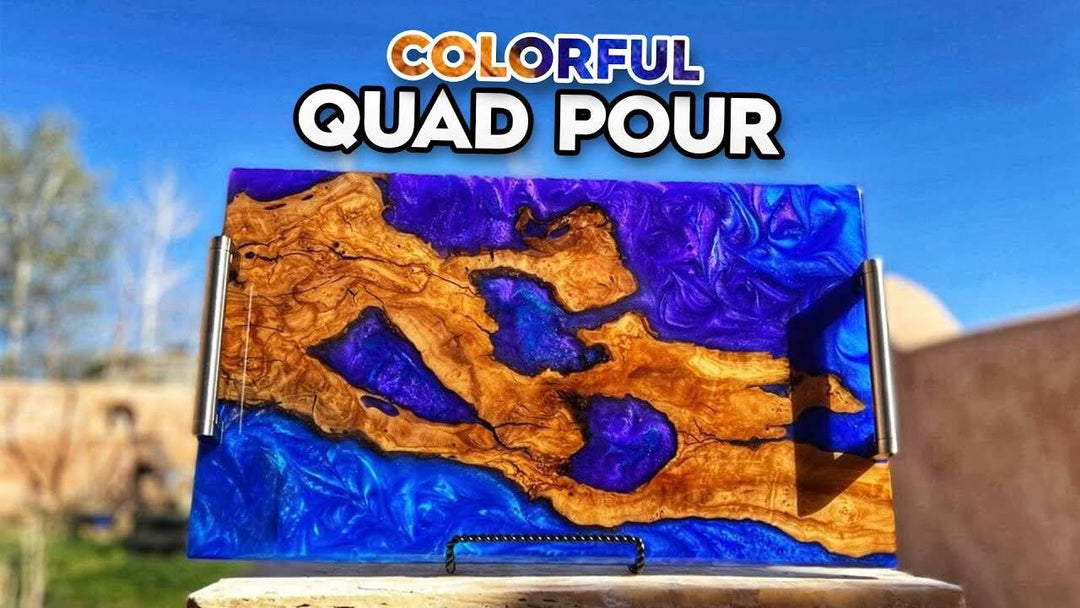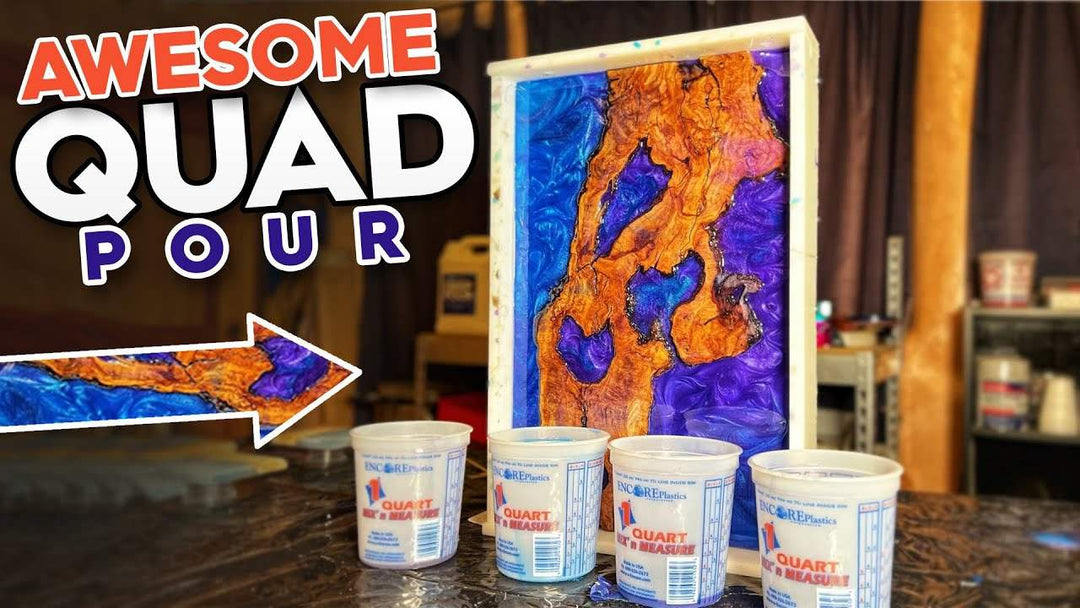
How To Do A Colored Dirty Pour l Step-By-Step Tutorial
In today’s tutorial, Jason with Upstart Epoxy walks us through conducting the dirty pour epoxy resin technique, using Upstart's table top epoxy & powdered pigment set! This resin technique is great for creating unique, distinct art work and home decor.
Skill Level: Beginner/Intermediate/Expert
Estimated Working Time: 24-36 Hours
What You’ll Need:
- Upstart Epoxy Table Top Resin
- Upstart Epoxy Art Resin
- Upstart Epoxy Powdered Pigments Set
- Pressed Wood Board(s)
- Router
- Krylon Fusion Primer
- Heat Gun
- Decal
- Sander
What is a Dirty Pour?
Let’s start this tutorial off by carefully mixing our table top epoxy! For this project, we are doing an epoxy dirty pour, which is a pouring technique where different colors are mixed together, then combined (not mixed) into a single cup. Then, this cup of resin is poured onto the canvas or project evenly.

Preparing for Your Epoxy Dirty Pour
To do the epoxy dirty pour properly, we’re going to mix up a few separate batches of epoxy- one for our flood coat, and then another batch that will be divided amongst our separate powdered pigment colors.
As you mix your separate batches, use the mixing sticks that come with your epoxy to make sure it’s mixed thoroughly. If you see the resin go back and forth from cloudy to clear, that means you’re doing it right!
When the cloudiness goes away, scrape your edges, sides, and bottom of your cup, and you’re done here. DIY Tip: To make sure the epoxy is fully mixed, you can do a drip test on a clean surface and examine it for cloudiness.

Apply a Base Coat Using Spray Paint
Next, we mixed together some white spray paint and premixed epoxy, then added a base coat of it to our blank canvas. We went with white to cover any fibers, dark spots or inconsistencies on our board.
This step also helps the powdered pigment colors we’ll be adding later pour seamlessly onto the canvas. That way when you conduct your dirty pour, you get those nice color separations that you want. Make sure you pour evenly!
While you’re waiting for that base coat to level itself out, it’s time to choose your mica powders. We chose six shades from powdered pigment colors, which were Deep Blue (BL3), Vivid Blue (Y427), Sparkle White (AW4), Silver Black (Y401), Black (BK2), and Bluish Green (GR5).
We went with a few colors that had a bit of shimmer to them, which helps the colors compliment the base coat and add a nice depth. We poured the second batch of mixed epoxy into six different cups, then mixed each color into their own respective cup using mixing sticks.

The Dirty Pour!
Now it’s time for the best part- the epoxy dirty pour! Make sure you have on a pair of gloves that you don’t mind getting dirty. Take each cup of colored epoxy and pour it onto the canvas. Feel free to get crazy here- have fun with it! If your gloves aren’t dirty after this step, you did it wrong! Save some of each color for a later step.
After your pour, take your gloved hand and move the colors around, filling in any gaps. You can use a clean mixing stick here to add more detail! Also, make sure you go over the sides and edges with the epoxy, which will help break any surface tension. Spray the canvas with denatured alcohol and then go over it with a blow torch to remove air bubbles. Let it sit overnight to cure!
When we came back the next day, we had to admire that beautiful color separation, and we loved how some of the base coat still shows through! The design is so distinct and interesting. This canvas is flawless and perfectly leveled!
We were so happy with the results, we didn’t do any finishing steps. If you feel like yours needs it, feel free to clean up the edges and underside with a sander, then pour a flood or seal coat of Upstart’s table top epoxy resin to finish it all off.

The Reveal!





